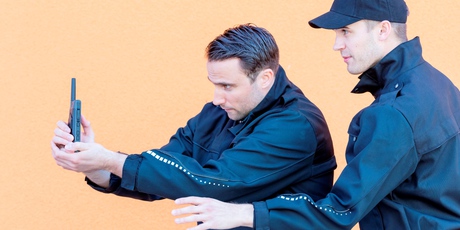Tactilon Dabat radio support apps counteract crime

Criminal suspects on the run could now be convicted more easily, following collaboration between Airbus Defence and Space and Facewatch on new radio support applications. These applications are designed to recognise suspects and will run on the Tactilon Dabat radio from Airbus Defence and Space.
The Tactilon Dabat is a complete TETRA handheld radio with camera and a rugged smartphone in one device. It allows secure communication in standard TETRA networks, as well as in an LTE environment. With these apps at hand, both police officers on the move and security personnel in enterprises can share complex information and verify suspects with given picture databases in real time. They can also take photos or videos and exchange visual data securely.
Facewatch provides multi-agency and governmental intelligence about criminals on an independent web platform. Users have the capacity to implement watchlists, facial recognition tools and an automatic number plate recognition system. All information converges on a single platform and is instantly disposable.
“This method of investigation is unique, because Facewatch apps on the Tactilon Dabat enhance crime analyses and optimise the collaboration among police officers and various security services,” said Nick Koiza, global head of applications at Facewatch.
The integration of third-party applications into TETRA networks has come about via Airbus Defence and Space’s TWISP developer community. The TWISP partnership program plays an important part in enhancing the company’s overall secure professional mobile radio technology. Airbus Defence and Space will continue to expand the number of partners and applications for its devices, creating more value for users.
Facewatch has been also collaborating with UK police and private businesses.
UGL completes radio comms package for Sydney Metro
UGL's radio team completed the essential radio system works throughout the city section of...
Lens antennas enhance connectivity at Sydney stadium
To meet the communication needs of the stadium, which has a capacity of 83,500 people, a...
Ericsson and Telstra achieve 5G uplink speed of 447 Mbps
Telstra and Ericsson claim to have achieved a 5G uplink speed of 447 Mbps in a sub-6 GHz 5G...





